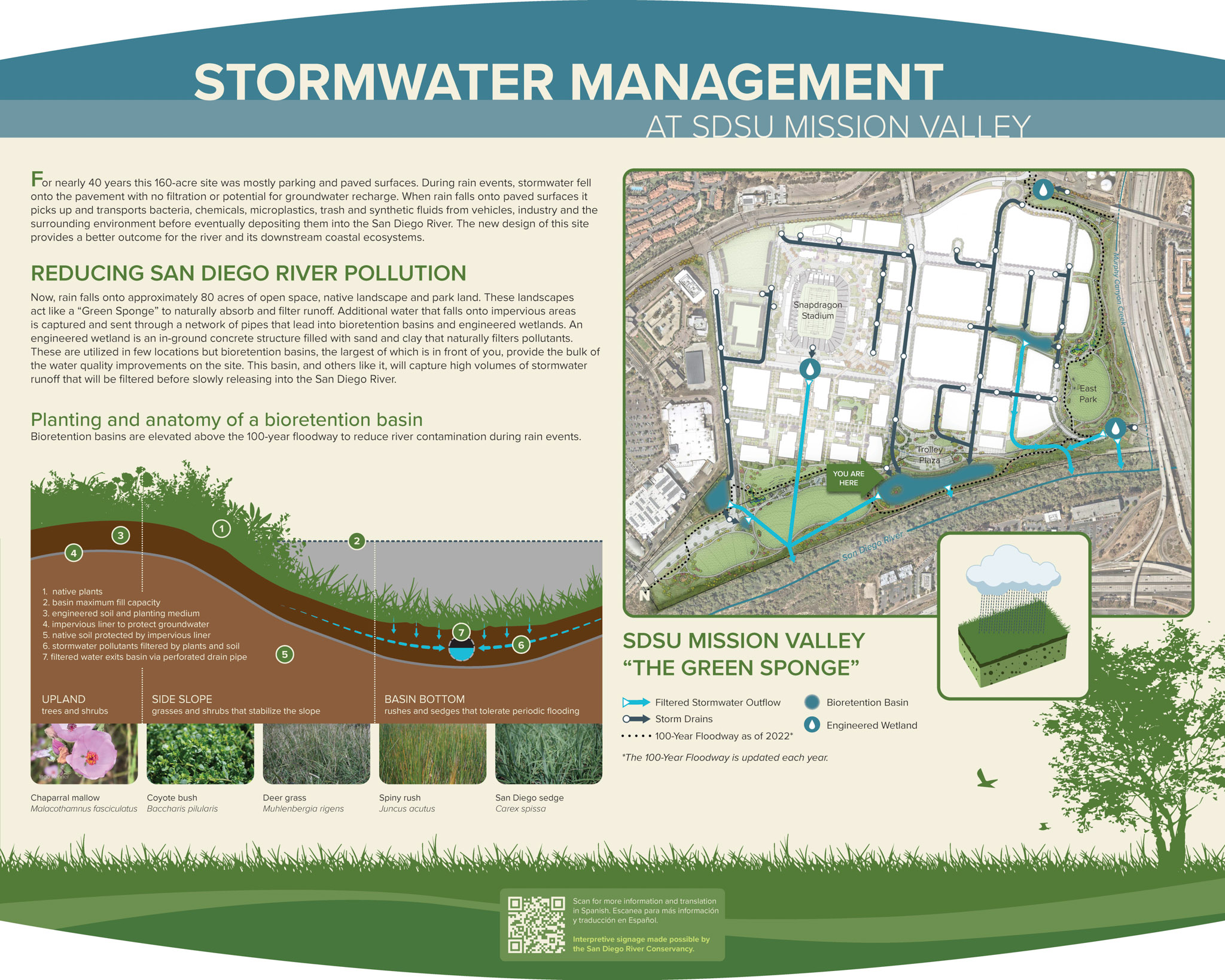Stormwater Management

For nearly 40 years, this 160-acre site was mostly parking and paved surfaces. During rain events, stormwater fell onto the pavement with no filtration or potential for groundwater recharge. When rain falls onto paved surfaces it picks up and transports bacteria, chemicals, microplastics, trash and synthetic fluids from vehicles, industry and the surrounding environment before eventually depositing them into the San Diego River. The new design of this site provides a better outcome for the river and its downstream coastal ecosystems.
Reducing San Diego River Pollution
Now, rain falls onto approximately 80 acres of open space, native landscape and park land. These landscapes act like a “Green Sponge” to naturally absorb and filter runoff. Additional water that falls onto impervious areas is captured and sent through a network of pipes that lead into bioretention basins and engineered wetlands. An engineered wetland is an in-ground concrete structure filled with sand and clay that naturally filters pollutants. These are utilized in few locations, while bioretention basins, the largest of which is in front of you, provide the bulk of the water quality improvements on the site. This basin, and others like it, will capture high volumes of stormwater runoff that will be filtered before slowly releasing into the San Diego River.

